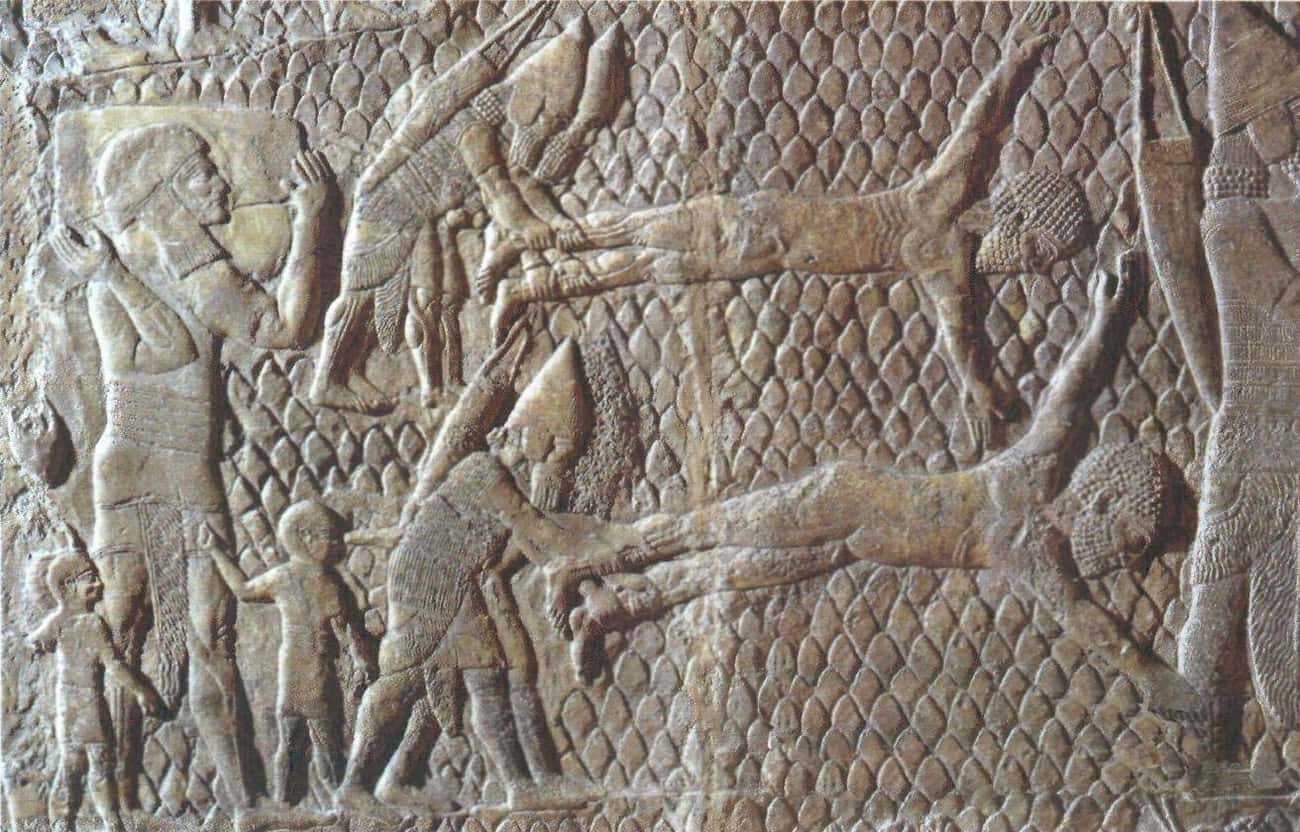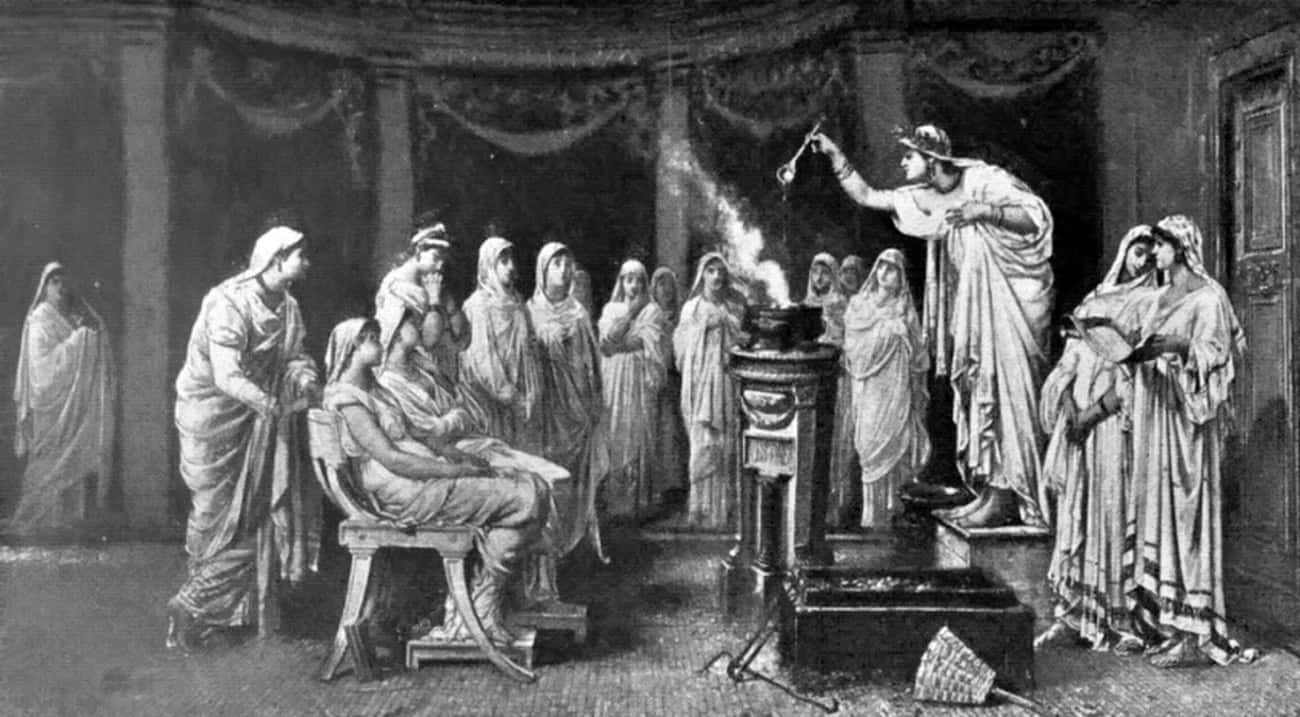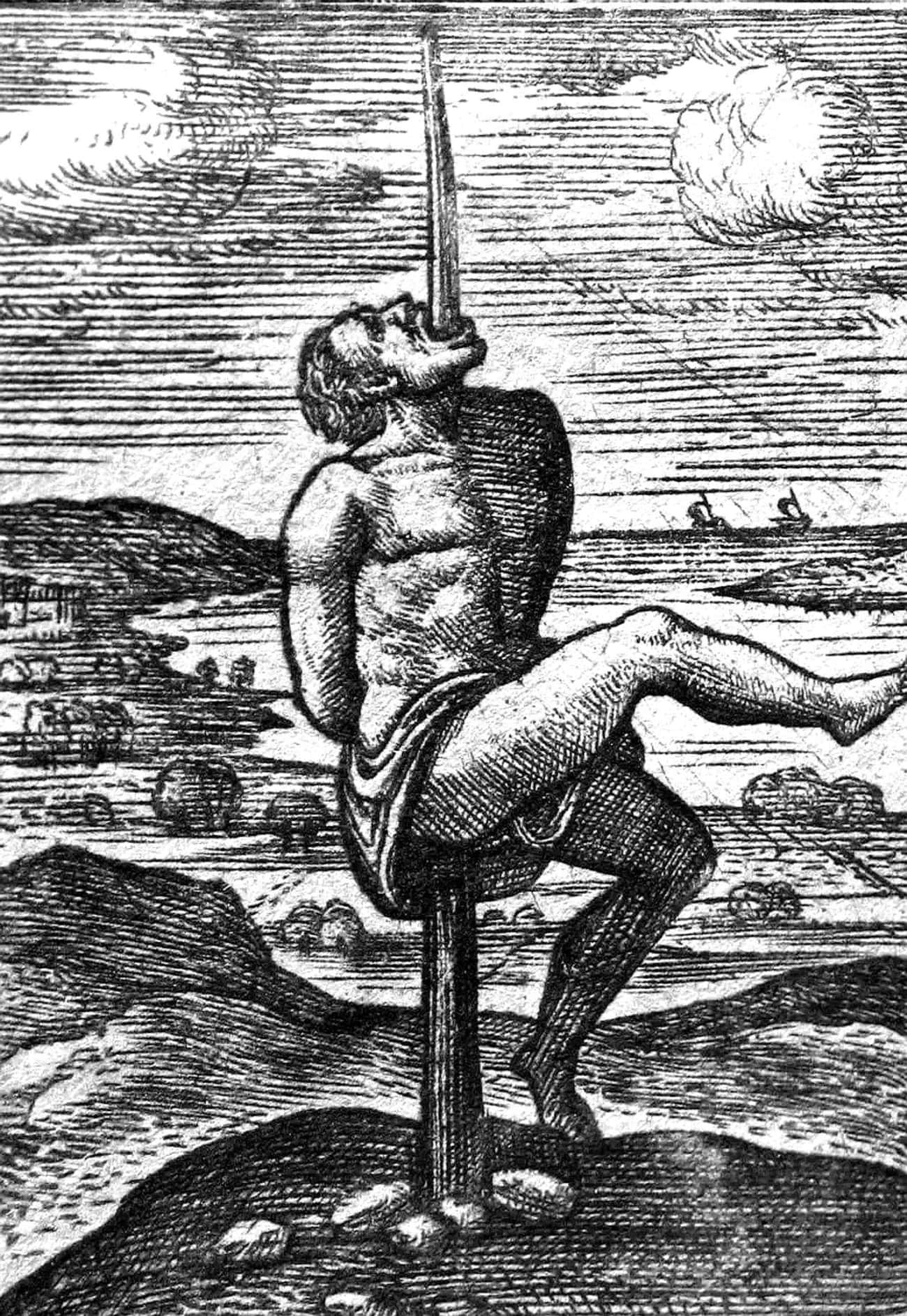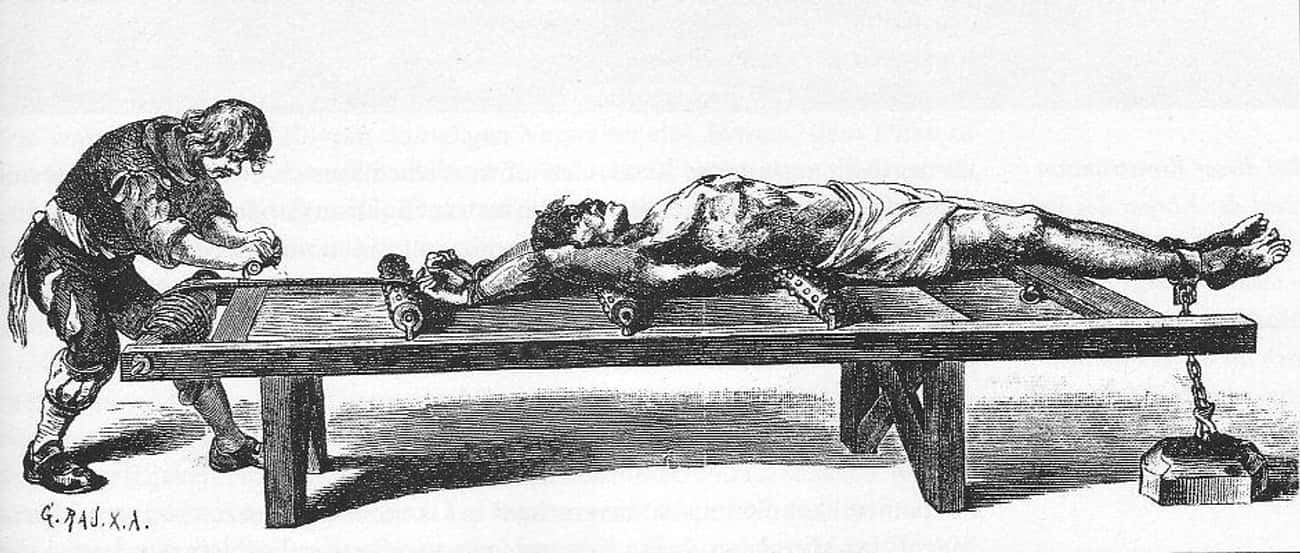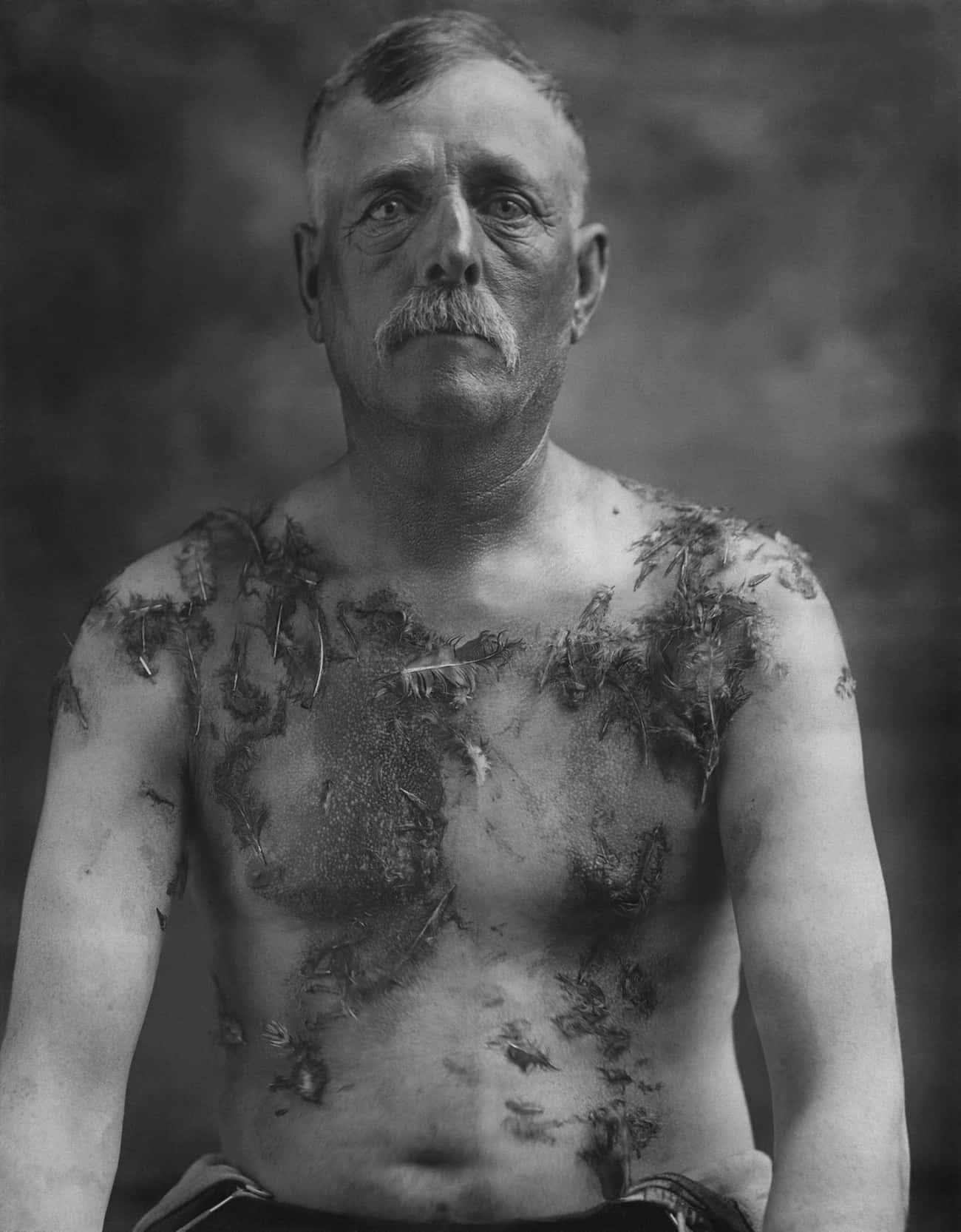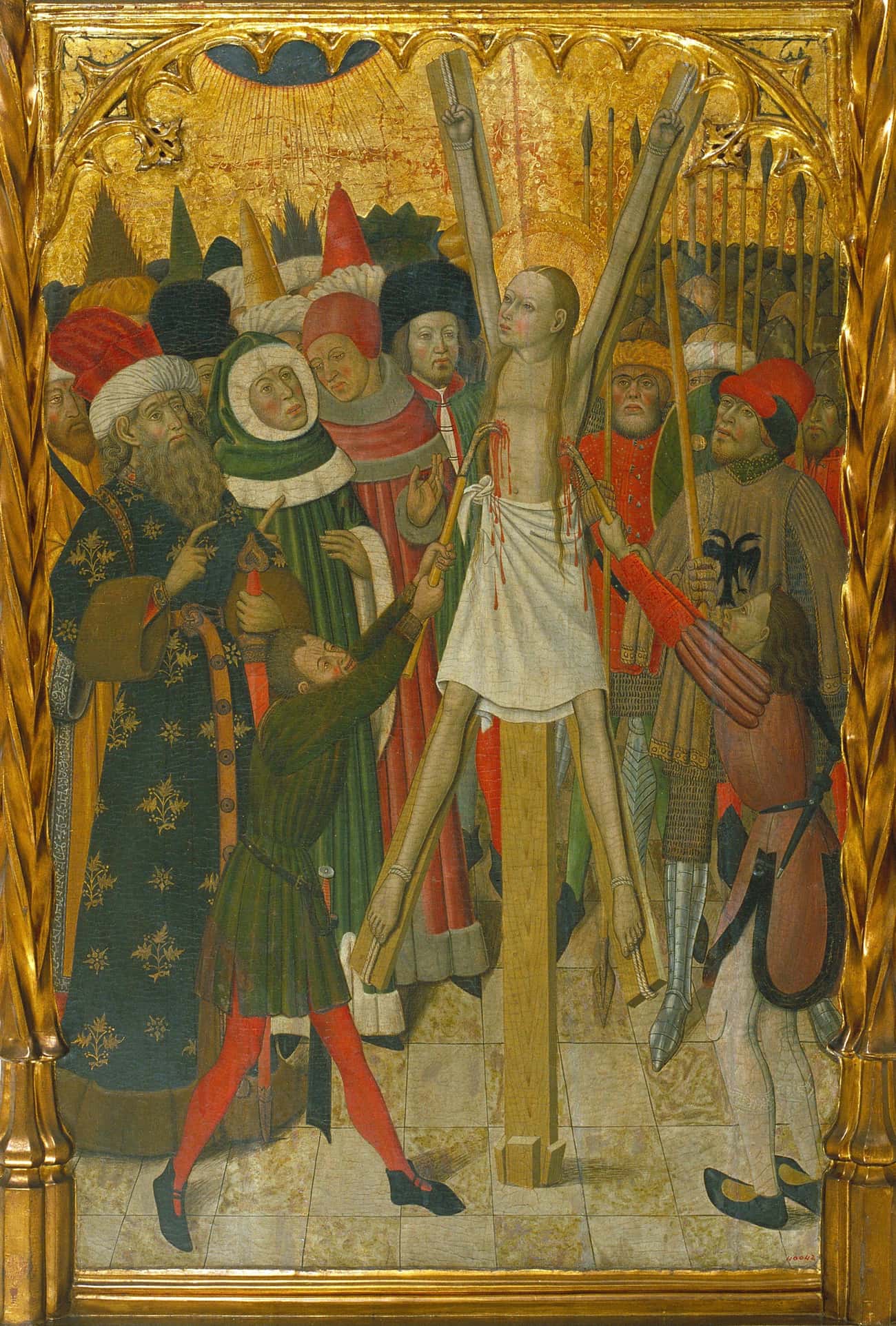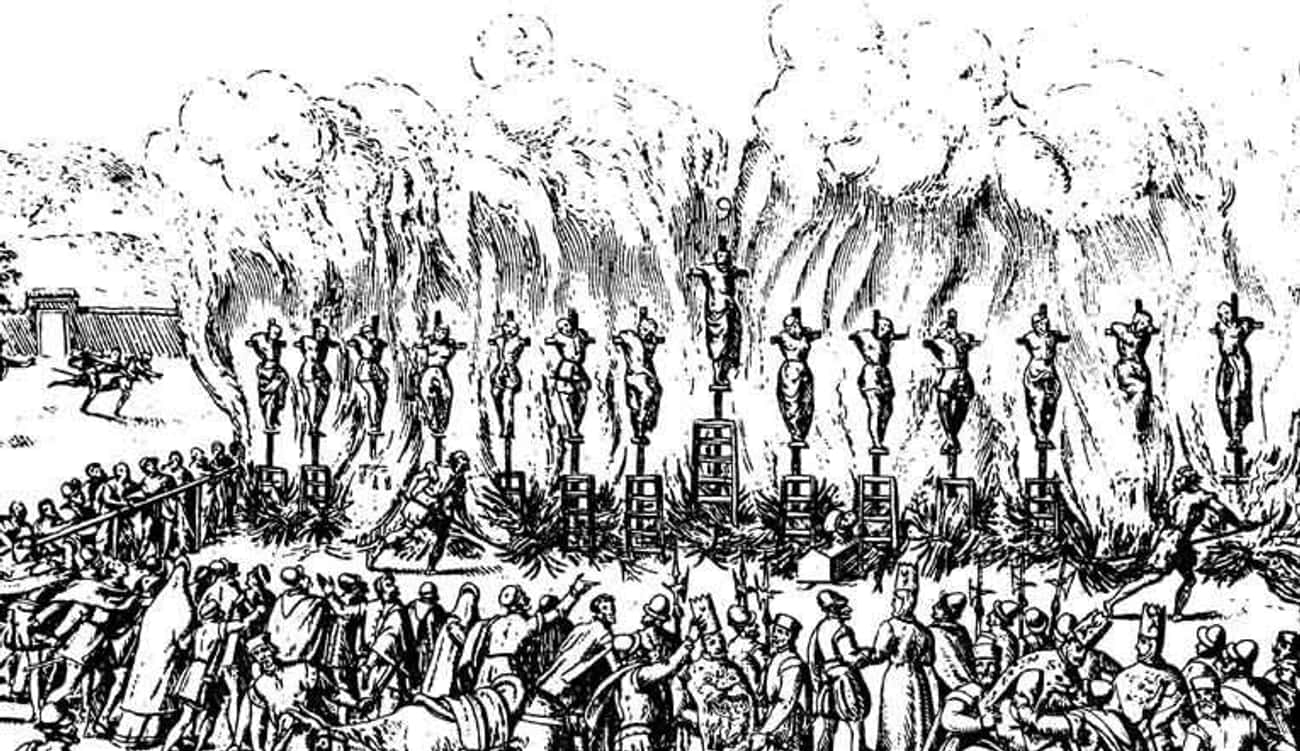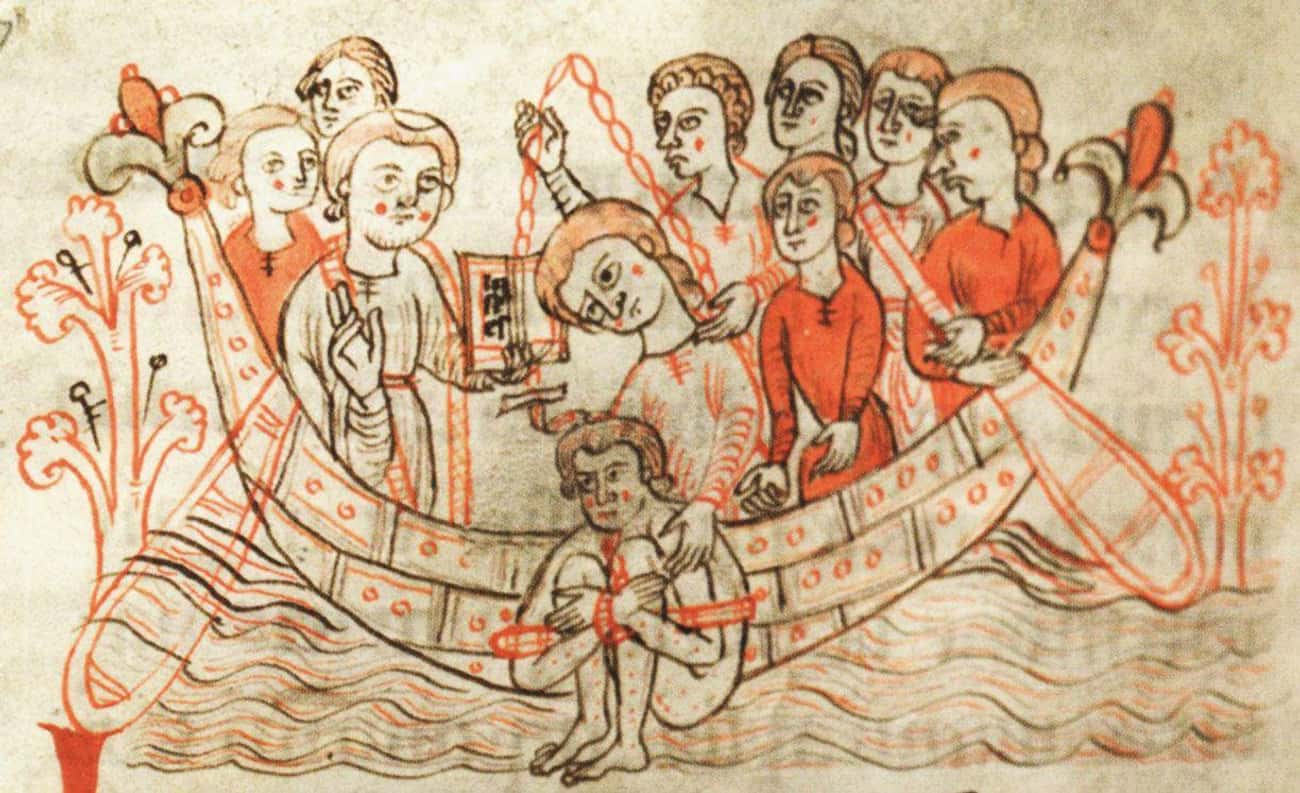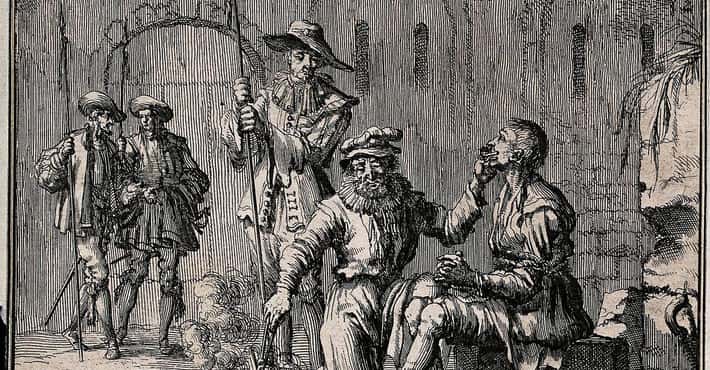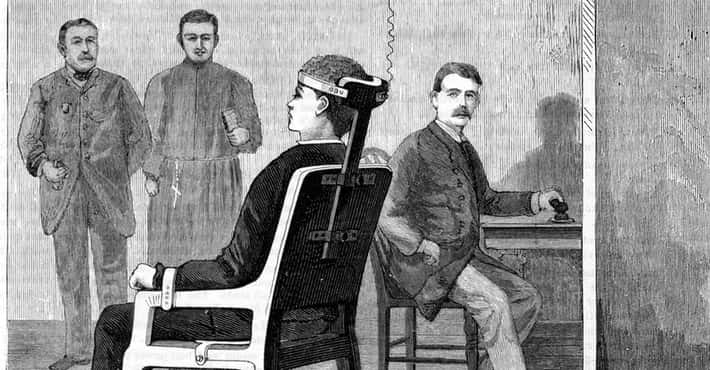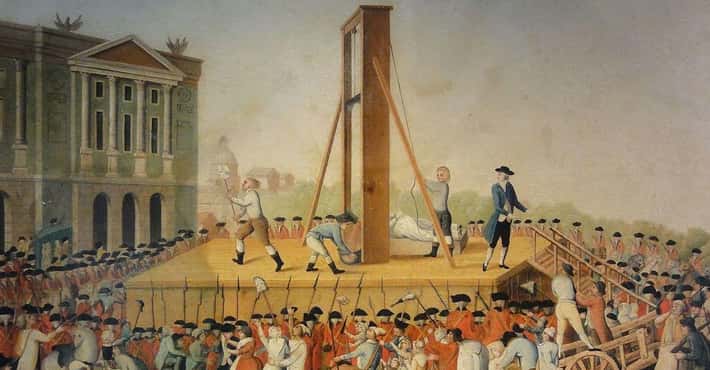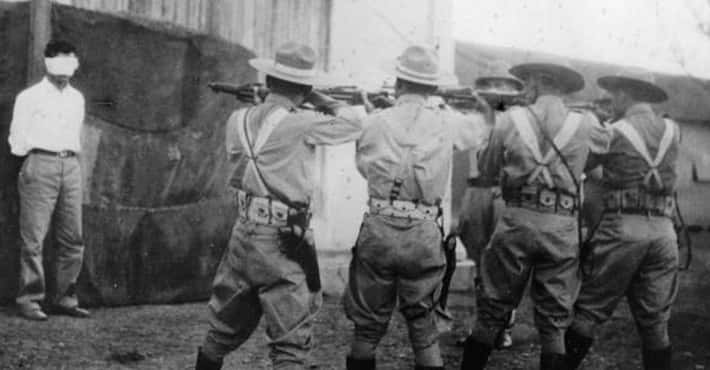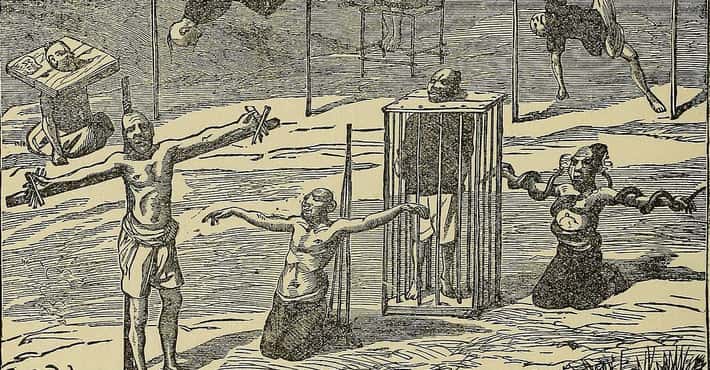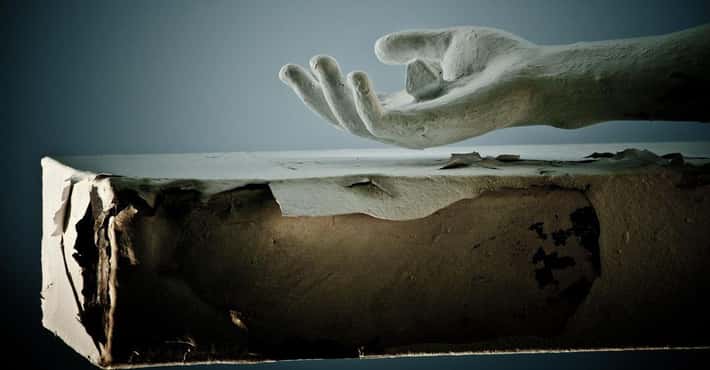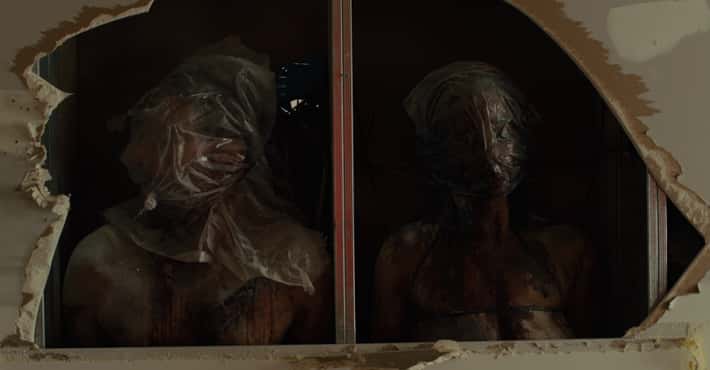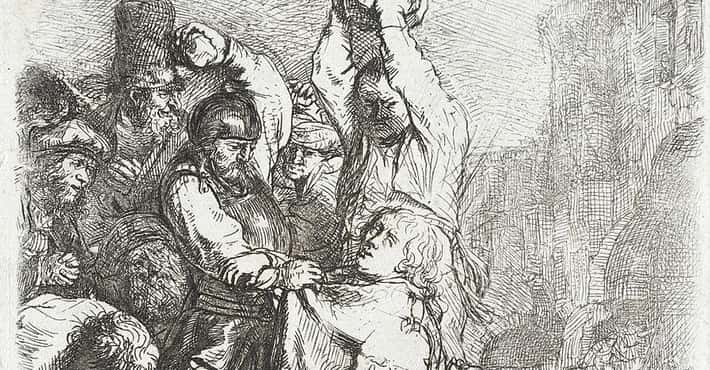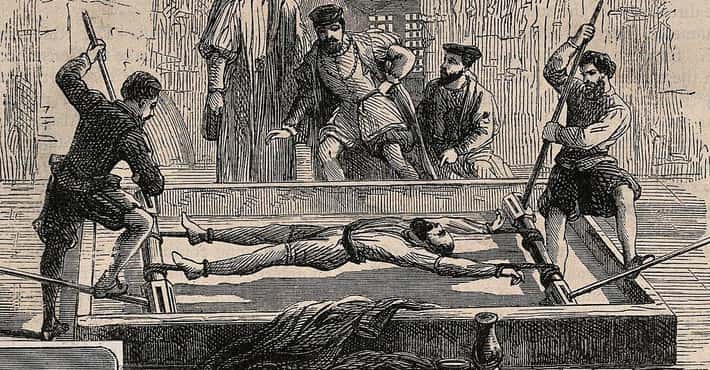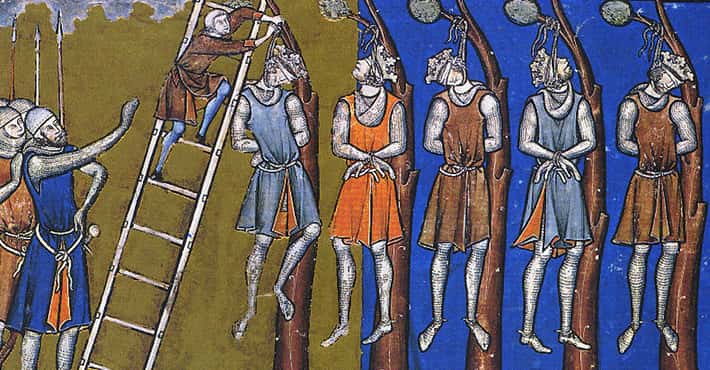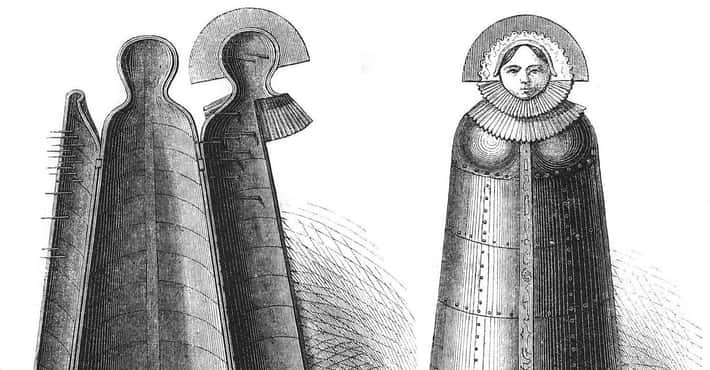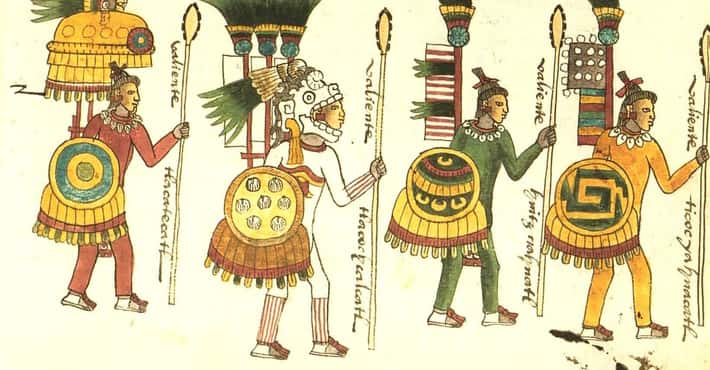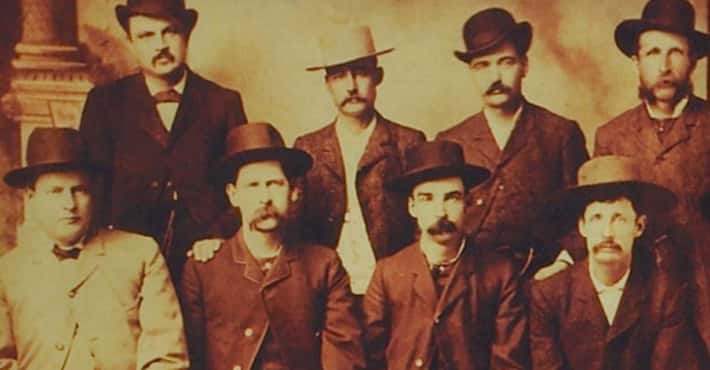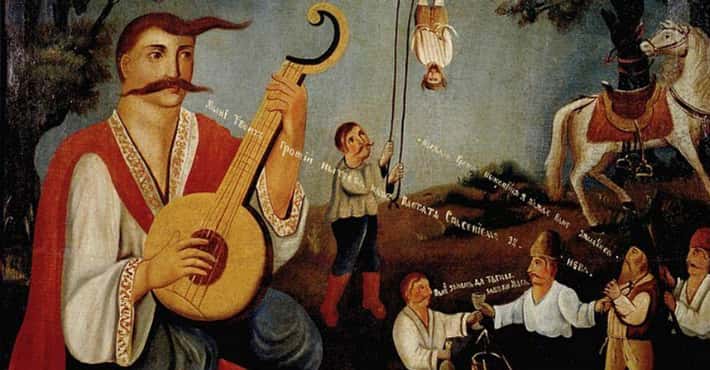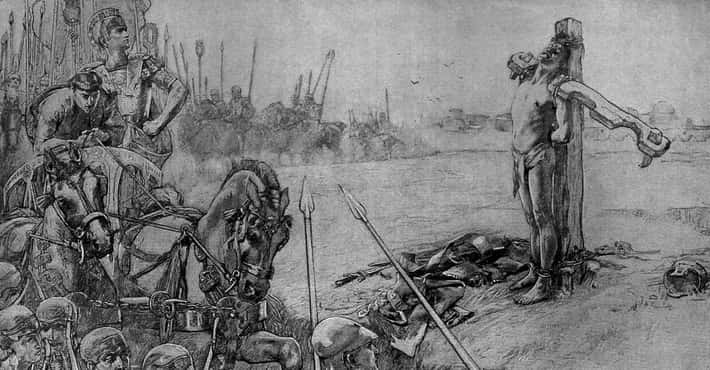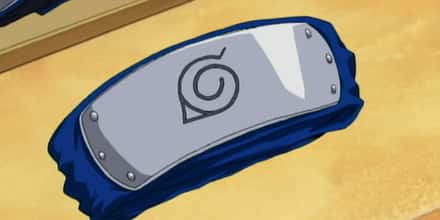14 Deliberately Evil Historical Punishments Designed To Be More Painful Than Death
Assyrian Prisoners Of War Were Flayed
Photo: Unknown / Wikimedia Commons / Public DomainMany today think removing a person's skin from their body is a medieval European form of punishment and torture due to popular culture depictions, most notably in Game of Thrones, but it was rarely ever used in medieval Europe. According to medieval historian Dr. Larissa Tracy, there is only one verifiable case of flaying between the 11th Century to the 16th Century: a Venetian commander Marcoantonio Bragadin was flayed by the Ottoman Turks after surrendering at the siege of Cyprus in 1571 CE.
Flaying was most prevalent in the Assyrian Empire from the 14th Century BCE until 610 BCE. The Assyrians were known for their military strength. By the 9th Century BCE, Assyria dominated northern Mesopotamia. After defeating their enemies in combat, the Assyrians punished anyone who opposed them by destroying their cities and flaying the nobility. King Ashurnasirpal recorded his victory over one city that resisted his conquest:
I flayed as many nobles as had rebelled against me [and] draped their skins over the pile [of corpses]; some I spread out within the pile, some I erected on stakes upon the pile … I flayed many right through my land [and] draped their skins over the walls.
Flaying was not only used to punish those who opposed the Assyrians but also to instill fear in anyone who considered to do the same.
Persian Criminals Were Subjected To The Boats
Originally attributed to the ancient Persians, this alleged form of punishment was used on only the worst criminals. Presented as a common form of Persian execution in Plutarch’s Parallel Lives, scaphism, also known as the boats, firstly required the victim to be laid flat in a boat. Another boat with holes to allow the victim’s head, hands, and feet to protrude was then laid over. The executioners forced the victim to drink a mixture of honey and milk, and covered the victim’s exposed body parts with that same drink. The victim was left in the boats, and nature took its course. With nowhere else to go, the victim was forced to excrete where they lie, flies swarmed the victim, and they were left until they were completely devoured.
Plutarch specifically mentioned the execution of Mithridates, a soldier who killed the brother of Persian King Artaxerxes in the 5th Century BCE. Supposedly, Mithridates finally died after 17 days of torture.
As brutal as this method may be, it is questionable whether or not it ever existed. Mithridates’s execution is the only instance of it. The first mention of this execution was from a Greek physician to the Persian court, Ctesias, who supposedly saw Mithridates’s execution firsthand. His account, however, has been lost, furthermore, both ancient historians who have referenced him or his work claim and modern historians argue to whether his work is reliable. Plutarch’s own history of Artaxerxes and scaphism was written 400 years after the event took place, and uses Ctesias’s History as his source.
Vestal Virgins Were Buried Alive If They Broke Their Oath
Photo: Rudolf Cronau / Wikimedia Commons / Public DomainThe Vestal Virgins were the priestesses to Vesta the goddess of home and hearth and held one of the most important religious roles in Rome. They acted as religious symbols of Rome as well as representations of the city and its citizenry. As such, Vestal Virgins were expected to make a lifetime commitment to the role, and the rules that come with it. The Vestals had to remain abstinent from sex their entire lives; they were expected to remain a symbol of purity, for as long as they were to remain both pure and unharmed, so will the city they signify.
The role was not taken lightly, for if any Vestal Virgin were to break her oath, she was executed as a sacrifice. Because of the symbolic and sacred aspect to the Vestals, if one broke her vow of celibacy, many perceived her as a former purity now tainted. No one wanted to be responsible for her death, and become tainted themselves, so the solution was to bury the Vestal alive and allow nature to kill her.
The Vestal was paraded around the city until she was brought to a small chamber by the Colline gate. Given only a lamp and a small amount of food, she was sealed in and left to die.
Roman Parricides Faced Poena Cullei
In Roman law, different forms of murder entailed different forms of punishment depending upon the severity of the murder. Parricide, killing one’s own parent or parents, sought a crueler form of punishment than other forms of homicide. When a person was convicted of the crime, they were condemned to Poena Cullei. This form of capital punishment required the condemned was whipped, before putting a wolf-skin bag over their head, and made to wear wooden-sole clogs. They were then tied in an ox-leather sack with a dog, a rooster, a viper, and a monkey, taken to a river or sea by black oxen, and thrown in the water to drown.
Poena Cullei was rarely used as a form of punishment. Roman biographer Suetonius wrote only those who confessed to patricide were actually sentenced to Poena Cullei. In 118 CE Emperor Hadrian allowed Poena Cullei to be substituted by “being thrown to wild beasts”, but only a century later the practice was considered obsolete.
Medieval Murderers Were Broken On The Wheel
Photo: Szilas / Wikimedia Commons / Public DomainBreaking on the wheel, aka breaking with the wheel, was a form of punishment primarily used in Western Europe during the early modern period to penalize murderers or thieves. Though the specifics were different from region to region, the condemned was generally tied to a wheel or cross, then struck with either a wooden wheel or an iron bar. Depending on the desired amount of pain inflicted before the death blow, the executioner chose where to strike. If he was feeling merciful, the executioner started at the neck, but if not, he began by striking at the condemned’s legs.
Prisoners Of War In Wallachia Were Impalled
Photo: Unknown / Wikimedia Commons / Public DomainImpalement is a crude form of torture and execution used from antiquity into the 20th Century in which a large, sharpened stake is thrust through a person's body from between their legs and is pierced through their entire body. The victim died after anywhere between a few hours and a couple of days of agonizing pain. The most notable use of impalement was by Vlad III, Prince of Wallachia, aka Vlad the Impaler. When Ottoman Sultan Mehmet II invaded Wallachia in 1462, he was greeted by the impaled corpses of Ottoman prisoners of war rather than the Wallachian army.
Criminals Were Dismembered On The Rack
Photo: Michael Sch. / Wikimedia Commons / Public DomainThe rack was a form of torture and punishment commonly associated with the medieval era, but it originated in ancient history. The criminal was tied down by their limbs, and the executioner spun a crank, which pulled the criminal’s limbs apart. The punished was stretched until their limbs were dislocated, and there were moments when the condemned's limbs were completely separated from their body.
Emperor Nero used the rack to force a confession of an assassination conspiracy from one of the head conspirators, Epicharis. On the first day, the rack dislocated her legs so by the second day she was unable to walk herself to the rack. Rather than suffer the rack, she tied a noose around her neck and used her body weight to suffocate herself.
Dutch Conspirators Were Tortured With Rats And Hot Coals
During the Eighty Years' War, Northern Holland governor Diedrich Sonoy used torture to legitimize and strengthen his authority over the region. He arrested eight men and charged them for a conspiracy to burn down a number of villages in Holland. For one of the condemned victims, Nanning Koppezoon, Sonoy put him on the rack and placed rats on him under a ceramic vessel. He put hot coals on the vessel, and with nowhere else to run from the heat, the rats burrowed into Koppezoon's body. Sonoy then put the hot coals into Koppezoon’s wounds. Though this method of torture is prevalent in movies and popular culture, there are not many cases when this method was actually used.
Iranian Political Dissidents Were Subjected To White Torture
A modern form of torture referred to colloquially as “White Torture” was used as a punishment and silencing measure on political dissidents, and reporters in Iran after an attempt of political reform in the 2000. Used primarily to force detainees to sign confessions and provide information on their political affiliations, White Torture was a form of psychological torture, which combines prolonged solitary confinement and sensory deprivation.
Former prisoner Amir Fakhravar said the pain and anguish from white torture far exceeded any physical torment he received from beatings and broken bones.
American Political Enemies Were Tarred And Feathered
Photo: Unknown / Wikimedia Commons / Public DomainThough prevalent mostly in the North American colonies, cases of tarring and feathering in the United States date up until the early 20th Century. The punished individual was covered in hot tar and feathers. Tarring and feathering was primarily enacted or provoked by revolutionary organizations, for example, the Sons of Liberty, as well as by mob justice, rather than as a state-sanctioned form of punishment. It gained much of its popularity the decade leading up to the American Revolutionary War. Crowds gathered to tar and feather British officials or individuals with anti-revolutionary predilections as an act of punishment and humiliation.
Tarring and feathering continued into the early 20th Century. A notable case was on the night of August 19th, 1918 in Luverne, Minnesota when German-American farmer John Meints was kidnapped, whipped, tarred and feathered, then ordered out of state with the threat of death. He was accused of being a German sympathizer in the later years of World War I because he refused to participate in a war bond drive.
Roman Criminals Were Crucified
Photo: Wikimedia Commons / Public DomainCrucifixion was a combination of punishment and political spectacle used by the Roman Empire. Individuals were whipped, forced to carry a wooden cross, or a similar structure, and fixed onto the cross by rope or nails and finally left until the condemned died. The cross could be propped in any orientation, but it depended mostly on how long the executioners wanted the condemned to live before their inevitable death. Those who died were rarely buried; their remains were usually left to be eaten by wild animals.
Heretics Suffered Through The Auto Da Fé
Photo: Jan Luykens / Wikimedia Commons / Public DomainThe Auto Da Fe was a ceremonial procession and burning at the stake during the Inquisition most notably in Spain and Portugal. The ceremony was used partially as a punishment for all heretics, a recognition and display of sin for those who repented, a symbolic reaffirmation of religious faith for all within society, and lastly an execution of those who refused to repent. The ceremony was not execution simply for the sake of killing those who were found to be heretics but as a form of punishment, which incorporated the whole society in the cleansing of heresy.
Heretics were lined up according to the hierarchy of their guilt. They included Jews, Muslims, Protestants, foreigners, sodomites, and blasphemers. Those with lesser crimes started the procession while those with greater crimes were last. They were led in procession throughout the city, both in an act of repentance and humiliation. They were given opportunities to repent their heresies, but at the end of the procession, those who did not repent were led out of the city and burned.
Suspected Witches Were Drowned
Photo: Unknown / Wikimedia Commons / Public DomainOrdeal by Water, aka swimming a witch, was a form of combined trial and punishment used on suspected witches in the East Slavic world and later England. Women suspected of witchcraft were tied up and cast into deep water. Those who sunk were considered innocent while those who floated were considered witches and promptly executed by fire. Regardless of the outcome of this ordeal, the woman was killed.
Many believed water was a pure and cleansing element. Thus if a person was thrown into the water and they floated, they must have dabbled with the occult, because the water did not accept them.
Yakuza Members Mutilate Their Fingers
Yubitsume is an act of self-penance still utilized by the Japanese Yakuza. Individuals within the Yakuza, or indebted to them, sever parts of their own finger with a hammer and chisel to demonstrate a sincere apology or as a punishment if they were to violate the Yakuza code or not pay their bets. This practice is not limited to a single cut, but rather another knuckle is severed with each mistake made.
The punishment is multi-faceted in purpose; firstly the victim suffers through the pain of amputating their own finger thus deterring them from making more mistakes. Secondly, it identifies the offender as someone who broke the Yakuza’s rules in an effort to deter others from doing the same.


